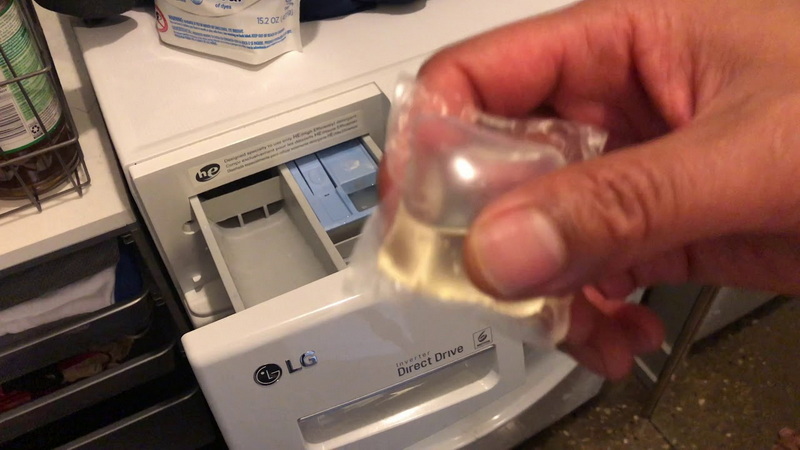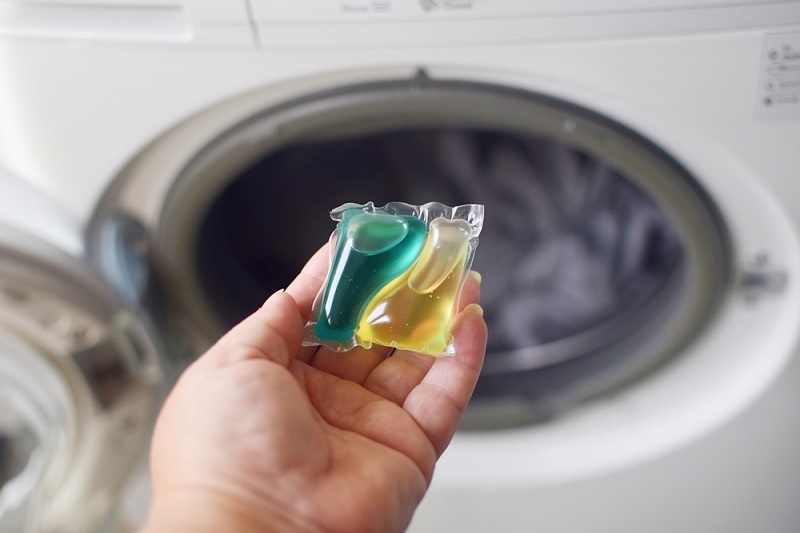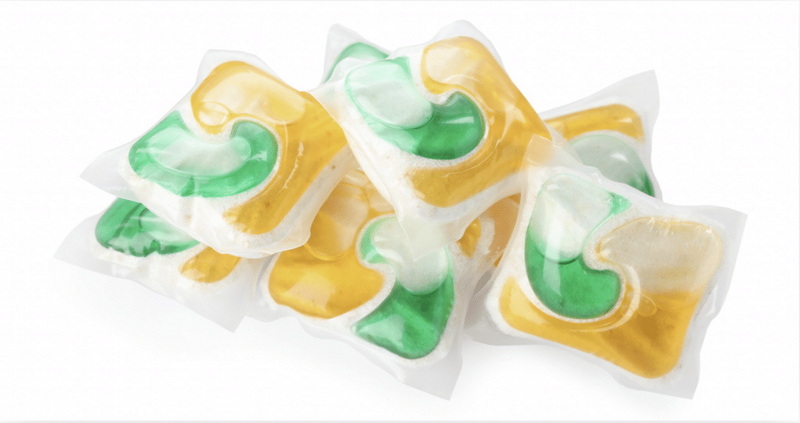Dongguan UFine Daily Chemical Co.,Ltd.
- All
- Product Name
- Product Keyword
- Product Model
- Product Summary
- Product Description
- Multi Field Search
Views: 222 Author: Tomorrow Publish Time: 11-15-2025 Origin: Site











Content Menu
● Understanding Front-Loaders and Pod Design
● Are Pods Safe for Front-Loaders?
>> Detergent Residue and Dispersion
>> Seal and Gasket Considerations
● Performance Factors to Consider
>> Load Size and Water Temperature
>> Environmental and Economic Considerations
● How to Use Laundry Pods in Front-Loaders Correctly
>> Handling and Safety Precautions
● Common Problems and Troubleshooting
>> Pod Not Dissolving Completely
● Comparisons with Other Detergent Formats
● Safety and Compliance Considerations
● Best Practices for Maintaining Front-Loaders
>> Detergent Drawer and Gasket Care
● Case Studies and User Experiences
>> Industrial and Small Business Scenarios
● FAQs
>> 1. Can laundry pods be used in all front-loading washing machines?
>> 2. Should pods be placed directly in the drum or in the dispenser?
>> 3. Can using pods cause more residue on clothing?
>> 4. Do pods work well in cold water?
>> 5. Are there safety concerns for children regarding laundry pods?
Laundry pods have become a popular choice for many households due to their convenience and pre-measured doses. This article examines whether laundry pods can be safely and effectively used in front-loading washing machines, addressing common concerns, safety considerations, compatibility with different fabrics and water temperatures, and practical tips to maximize performance. By understanding the design of front loaders and the properties of laundry pods, consumers can make informed decisions about their laundry routine.

Front-loading washing machines operate by tumbling clothes in a horizontally aligned drum while water is introduced from the top or sides. This design is efficient for cleaning and typically uses less water than top-loaders. Laundry pods are compact packets containing concentrated detergent, sometimes with additional stain removers or softeners. They are designed to dissolve in water, releasing their contents evenly throughout the wash cycle. The interaction between a pod and a front loader depends on several factors, including the pod's formulation, the load size, and the machine's cycle settings. When used correctly, pods can deliver consistent dosing and eliminate the need for measuring liquid or powder detergents.
Pods are formulated to dissolve quickly in water. In front-loaders, the high efficiency (HE) design requires detergents to disperse completely to avoid residue on garments or within the drum. Most modern front-loading machines and pod formulations are compatible, provided the pod is placed in the drum at the start of the wash cycle or used according to the manufacturer's instructions. If a pod does not dissolve properly, it can leave a residue on clothing or cause foaming issues. Using the correct cycle and ensuring adequate water flow helps mitigate this risk.
Front-loaders have gaskets and seals that are exposed to moisture and detergents. Pod formulations are generally designed to minimize foaming and residue, reducing the risk to seals. However, persistent use of highly concentrated pods in machines not rated for such formulations can potentially contribute to buildup over time. Regular maintenance, including gasket cleaning and occasional running of an empty hot wash with a descaling agent, can help preserve machine integrity.
Pods are intended to dissolve in use and are often optimized for standard load sizes. Overloading a front-loader or using very cold water temperatures can slow dissolution, increasing the chance of partial dissolution and residue. It is recommended to follow the manufacturer's guidelines for load size and to select a wash cycle with water temperature appropriate for the fabric care requirements and pod formulation. In cold washes, some pods may take longer to dissolve, so an extra rinse or a longer cycle might be necessary to prevent residue.
Pods work well for most everyday laundry, including cottons, synthetics, and blends. For heavily soiled items, particularly greasy or oily stains, pretreatment may still be beneficial. Some pods include pretreatment agents or stain removers, but relying solely on a pod for tough stains may not yield optimal results. For delicate fabrics, ensure the detergent strength is suitable and consider using a cycle designed for delicates to protect fibers.
Pod design often emphasizes compact packaging and reduced packaging waste, which can be beneficial for environmental concerns. Economically, pods can be cost-competitive and reduce waste by eliminating the need to purchase separate detergents and additives. Consumers should compare per-load costs and consider the overall lifecycle impact, including plastic packaging and production resources.

Most manufacturers instruct placing the pod directly into the drum before adding clothes, allowing it to dissolve as the cycle begins. Some front-loading machines have dispensers designed for pod use, or may require the pod to be placed in a compartment. Always consult the machine's manual for specific instructions. Do not place pods in the detergent drawer unless the manual explicitly allows it, as improper placement can hinder dissolution and lead to residue on clothes.
Keep pods out of reach of children and pets, as they can be harmful if ingested. Do not cut, puncture, or mishandle pods, since this can cause exposure to highly concentrated detergents. If a pod is damaged or dissolves outside the drum, wash the affected area promptly to avoid skin irritation. Some pods include scent additives or brighteners; if sensitive skin is an issue, consider fragrance-free formulations.
If a pod fails to dissolve, check water temperature, cycle selection, and load size. Switch to a warmer cycle if the fabric care guidelines permit, and ensure proper water flow. If the problem persists, try a different brand or form (liquid or powder) and test for residue removal performance.
Residue can occur if the pod dissolves unevenly or if the wash cycle is insufficient for complete dispersion. Running an extra rinse or selecting a longer wash time can help. Pre-treat stubborn stains separately to avoid relying solely on the pod's cleaning power.
High-efficiency machines are designed to use low-foaming detergents. If a pod causes excessive foam, verify that the product is specifically labeled for HE front-loaders and that the cycle selected is appropriate for the detergent. Consider trying a different pod formula if foaming persists.
Pods offer convenience and pre-measured dosing, reducing the risk of overuse. Liquid detergents can provide more control over concentration in unusual loads or heavily soiled items, but they require measuring and can spill. Pods are generally easier for households with variable load sizes and busy schedules.
Powder detergents are effective and often inexpensive, but powders can leave residue if not fully dissolved, especially in cold water or low-water cycles. Pods minimize this risk due to their design to dissolve in water as the wash begins.

Store pods in a secure location, out of reach of children. Use children's safety caps if available and avoid transferring pods to other containers, which can create confusion or risk.
Many pod products comply with safety and environmental guidelines, including packaging and shipping restrictions. When choosing products, look for third-party certifications or eco-labels that indicate responsible sourcing and reduced environmental impact.
Run an empty, hot-water cycle periodically with a cleaner designed for front-loaders to remove residue, soap scum, and mineral buildup. This maintenance helps preserve performance and prevent odor issues.
Wipe down the detergent drawer and door seal to remove any leftover detergent residue. Keeping these areas clean reduces the chance of mildew and improves overall efficiency.
Numerous households report satisfaction with using laundry pods in front-loaders, citing reduced mess and consistent dosing. Some note occasional dissolution issues with very cold washes or overloaded loads, which can be mitigated with cycle adjustments and proper load management.
Small businesses that rely on front-loading machines often appreciate pods for their consistent dosing and reduced inventory management. In these settings, maintaining routine maintenance and following manufacturer guidelines is essential to prevent buildup or performance drops.
Laundry pods can be a convenient and effective option for front-loading washing machines when used correctly. Compatibility hinges on following manufacturer instructions, selecting appropriate cycles, and ensuring pods dissolve properly within the cycle. Regular machine maintenance remains important to prevent buildup and ensure optimal performance. For households seeking simplicity, pods offer reliable dosing and reduced measuring effort, while heavy soiling or delicate fabrics may benefit from alternative detergent formats or pretreatment techniques. By understanding the interplay between pod formulations and front-loader mechanics, users can tailor their laundry routine to achieve clean results with minimal hassle.

Laundry pods are designed to work with most front-loading machines labeled as HE or high-efficiency. Always check the user manual for compatibility with detergent formats and dispenser configurations before use.
In most cases, pods should be placed directly in the drum at the start of the cycle, but some machines may have specific instructions. Refer to the machine's manual for the recommended placement method.
If a pod does not dissolve completely, there may be some residue. Ensuring the correct cycle, water temperature, and load size can minimize this risk. An extra rinse can help if residues are observed.
Many pods dissolve in cold water, but dissolution speed can vary by product. If cold-water effectiveness is a concern, warm or hot cycles may improve dissolution, provided fabric care guidelines allow.
Yes. Pods are hazardous if ingested. Store them securely, keep them out of reach of children, and consider using childproof packaging and caps. Handle pods carefully and never place them in an area accessible to children.